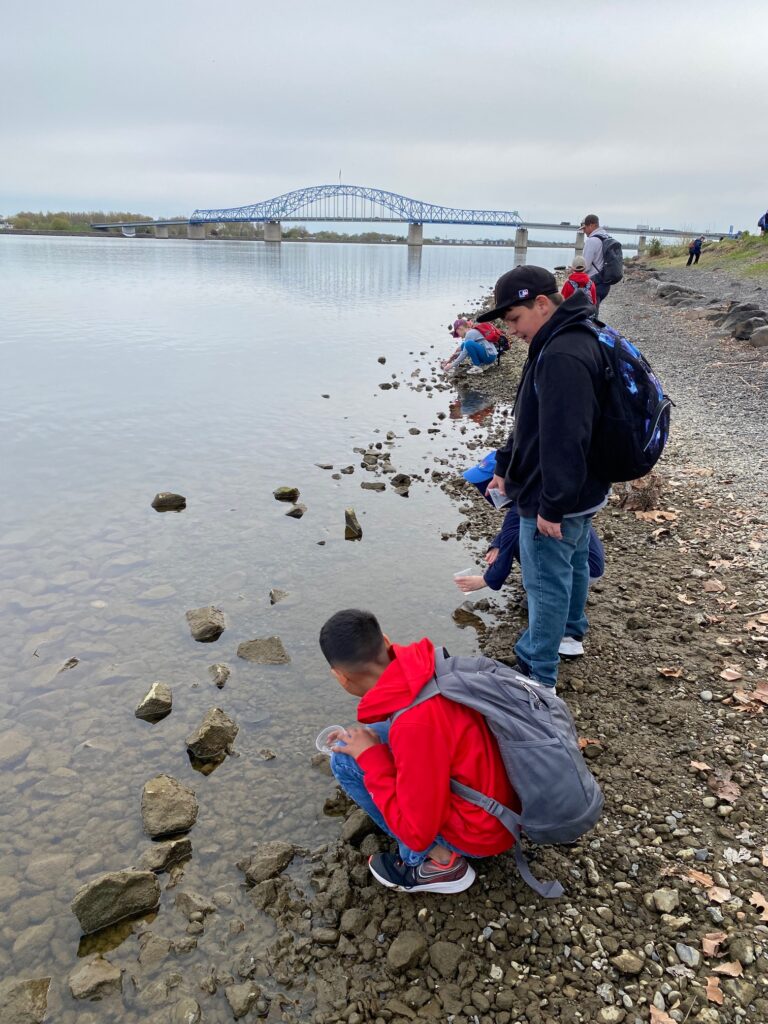GUEST BLOGGER MARY BOONE
Salmon in the Classroom
Salmon are captivating animals. They begin their lives in freshwater streams, lakes, and rivers, and then migrate to the ocean. Two to seven years later, depending upon their species, they return to their birthplace to spawn, using scent and the Earth’s magnetic field to find their way home. School of Fish is an informational fiction picture book based on the very real Salmon in the Classroom program. Similar programs use trout or sunfish to give students firsthand lessons in habitats, lifecycles, conservation, and more. The activities below will give students a chance to use writing styles and processes to deepen their understanding of some fascinating fish.
Activity 1: Compare and contrast
Read School of Fish and discuss with students some of the things they learned about the salmon’s lifecycle.
Choose and read a second picture book about an animal’s lifecycle. The Story of a Butterfly by Margaret Rose Reed or And the Bullfrogs Sing: A Life Cycle Begins by David L. Harrison are good options.
Have students compare the lifecycles of salmon and the animals featured in the second book. As a class, use a Venn diagram to identify similarities and differences and organize student ideas.
Have students write a short paragraph comparing and contrasting the lifecycles of the two species.
Activity 2: Empathy writing
School of Fish focuses on the teacher and students who are raising salmon and releasing them. After reading the book, ask students how they believe students in the book must feel. Are they proud? Happy? Worried? Do those emotions change over the course of the story?
Next, ask students to imagine they are one of the salmon in the classroom in this book.
- How do they feel while they’re in the tank?
- How do they feel about students watching them all the time?
- How do they feel about being released into the wild?
- What obstacles and predators are they most concerned about?
Have students write a letter from the salmon’s point of view, reflecting on their journey from the classroom to the river and, finally, out to the ocean.


Activity 3: Fishy poetry
Read
Read School of Fish.
Next, read several haiku to students to familiarize them with – or remind them about – the poem’s structure. My First Book of Haiku Poems: A Picture, a Poem and a Dream by Esperanza Ramirez-Christensen provides some good modern examples. Remind students that haiku poems consist of three lines. The first line is five syllables, the second is seven syllables, the third is five syllables. Make sure students know how to determine syllables in words.
Write
On a whiteboard or large sheet of paper, work as a classroom to create a list of words that describe salmon. Remind them to use all their senses when brainstorming descriptive words. Not all these words will be used in the students’ poems, but having a lengthy list will give them more to choose from when writing their haikus.
Have students start with their first line of five syllables. Encourage them to focus on vivid language rather than complete thoughts or sentences.
As students proceed to their second and third lines, encourage them to further the idea they started with in line one.
Share
Have students share their salmon-themed haikus with a partner or larger group. Or, have students illustrate their haikus to display around the classroom.
Featured image credit: “Province Establishes Wild Salmon Advisory Council” by BC Gov Photos is licensed under CC BY-NC-ND 2.0.
Mary Boone has hung out backstage with a boy band, DNA tested salmon, and baked dozens of cricket cookies – all in the interest of research for her books and magazine articles. She’s written 70+ books for young readers. Her most recent picture book, SCHOOL OF FISH (illustrated by Milena Goloy and published by Albert Whitman & Co.), is based on a real program through which students get hands-on experience raising and releasing salmon. Her next two picture books PEDAL PUSHER (Henry Holt & Co.) and FLYING FEMINIST (Andersen Press) are both about barrier-breaking women. For more information, please visit Mary’s website or follow her on social media: X: @boonewrites, Instagram: @boonewrites, Facebook: Mary Boone – Author












Leave a Reply
Your email is safe with me.